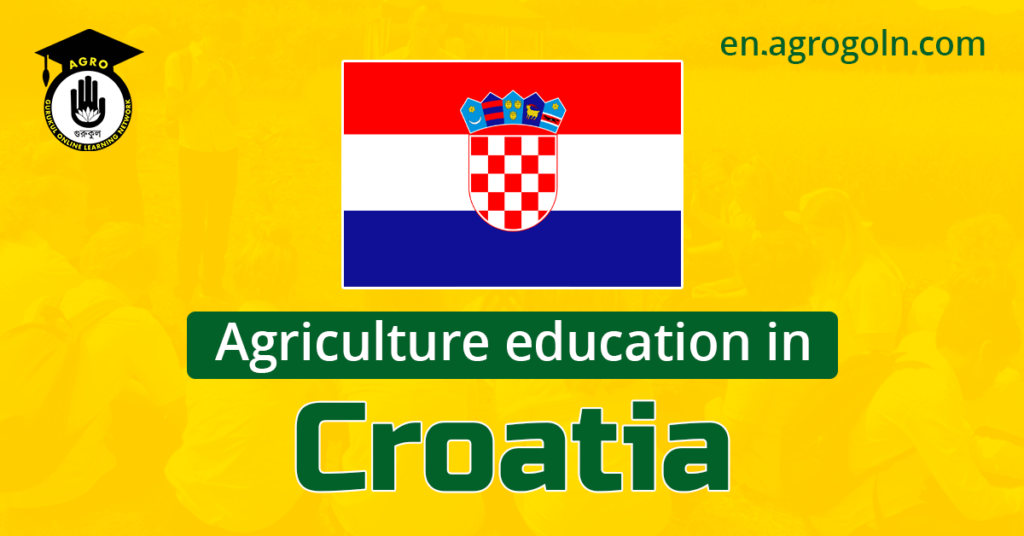Agriculture is deeply woven into Croatia’s history, culture, and economy. From the lush fields of Slavonia to the vineyards of Istria and Dalmatia, Croatia boasts a diverse and rich agricultural tradition. As the world progresses, the need for sustainable and innovative farming practices grows. Enter agriculture education, a foundation that equips individuals with the knowledge and skills necessary to navigate the complexities of modern farming. In Croatia, agriculture education serves as a bridge between traditional practices and contemporary needs.
Historical Background
Agricultural activities in Croatia can be traced back thousands of years, influenced by the Illyrians, Romans, and later the Slavs. Over the centuries, different regions in Croatia developed specific agricultural products and methods. For instance, the Dalmatian coast is renowned for its olive groves, while Slavonia is celebrated for its cereals.
Education pertaining to agriculture historically took place informally, passed down through generations. Families, villages, and communities held valuable knowledge on sowing, harvesting, livestock rearing, and preserving. However, as times changed and modern farming methods and technologies emerged, there was a clear need for a formal educational structure dedicated to agriculture.
The Emergence of Formal Agriculture Education
In the late 19th and early 20th century, Croatia saw a surge in organized agricultural education. Schools dedicated to teaching modern agricultural practices began to emerge, taking inspiration from similar institutions in central Europe.
One of the earliest forms of organized agricultural education was in the shape of agricultural courses and later, specialized schools. As the country transitioned through different political and social periods, from being a part of the Austro-Hungarian Empire to Yugoslavia, the emphasis on agricultural education varied but remained a crucial part of the nation’s development.
Contemporary Agriculture Education in Croatia
Today, agricultural education in Croatia can be categorized into three primary levels:
- Secondary Agricultural Schools: These are vocational schools offering four-year programs in various agricultural disciplines. Students are trained in both theoretical and practical aspects, with schools often possessing their farms for hands-on training.
- Colleges and Polytechnics: These institutions offer short-term (2-3 year) professional programs focused on specific areas of agriculture, such as viticulture, animal husbandry, or organic farming.
- Universities: There are several universities in Croatia providing undergraduate, graduate, and doctoral programs in agriculture. The University of Zagreb’s Faculty of Agriculture is the most renowned, offering a comprehensive range of programs. It conducts cutting-edge research, partners with industries, and collaborates internationally, making it a hub for agricultural studies in the region.
Key Trends and Innovations
Several trends and innovations have shaped agriculture education in Croatia in recent years:
- Sustainability: As concerns over climate change grow, there’s an increased focus on teaching sustainable farming practices. Croatia’s agricultural institutions are integrating concepts like organic farming, conservation techniques, and sustainable resource management into their curricula.
- Technological Advancement: Modern farms are leveraging technology for better yields and efficient management. Students are now taught about precision agriculture, drone technology, and digital farm management tools.
- Entrepreneurship: The entrepreneurial spirit is being fostered in students to encourage them to innovate and possibly start their agribusiness ventures. They’re taught about market dynamics, business management, and value addition.
- Global Collaboration: Croatian agricultural institutions are actively participating in global networks, enabling students to gain international exposure, learn about best practices, and engage in collaborative research.
Challenges and Opportunities
Like many countries, Croatia faces its set of challenges in agriculture education:
- Aging Farming Population: Many young people are migrating to urban areas or abroad in search of jobs, leading to an aging farming population. Engaging youth and making agriculture appealing to them is a pressing challenge.
- Resource Constraints: While the desire to modernize is there, financial and infrastructural constraints can hinder progress. Investments in the sector, both domestic and international, are crucial.
- Balancing Tradition and Modernity: Croatia has a rich agricultural heritage. The challenge is to respect and preserve these traditions while integrating modern methods and technologies.
However, these challenges also present opportunities. For instance:
- Agritourism: Croatia, with its beautiful landscapes and rich traditions, can leverage agritourism. This can serve as an incentive for young people to stay in rural areas and engage in farming.
- EU Membership: Being a member of the European Union offers Croatia access to funds, programs, and collaborative opportunities to bolster its agricultural sector.
Conclusion
Agriculture education in Croatia, while rooted in its ancient traditions, is evolving to meet the needs of the modern world. It’s more than just about producing food; it’s about sustainable practices, innovation, and equipping the next generation with the skills and knowledge to feed the nation and beyond. As Croatia faces its set of challenges, it’s also positioned uniquely to leverage numerous opportunities, making the future of agriculture education in the country promising.

